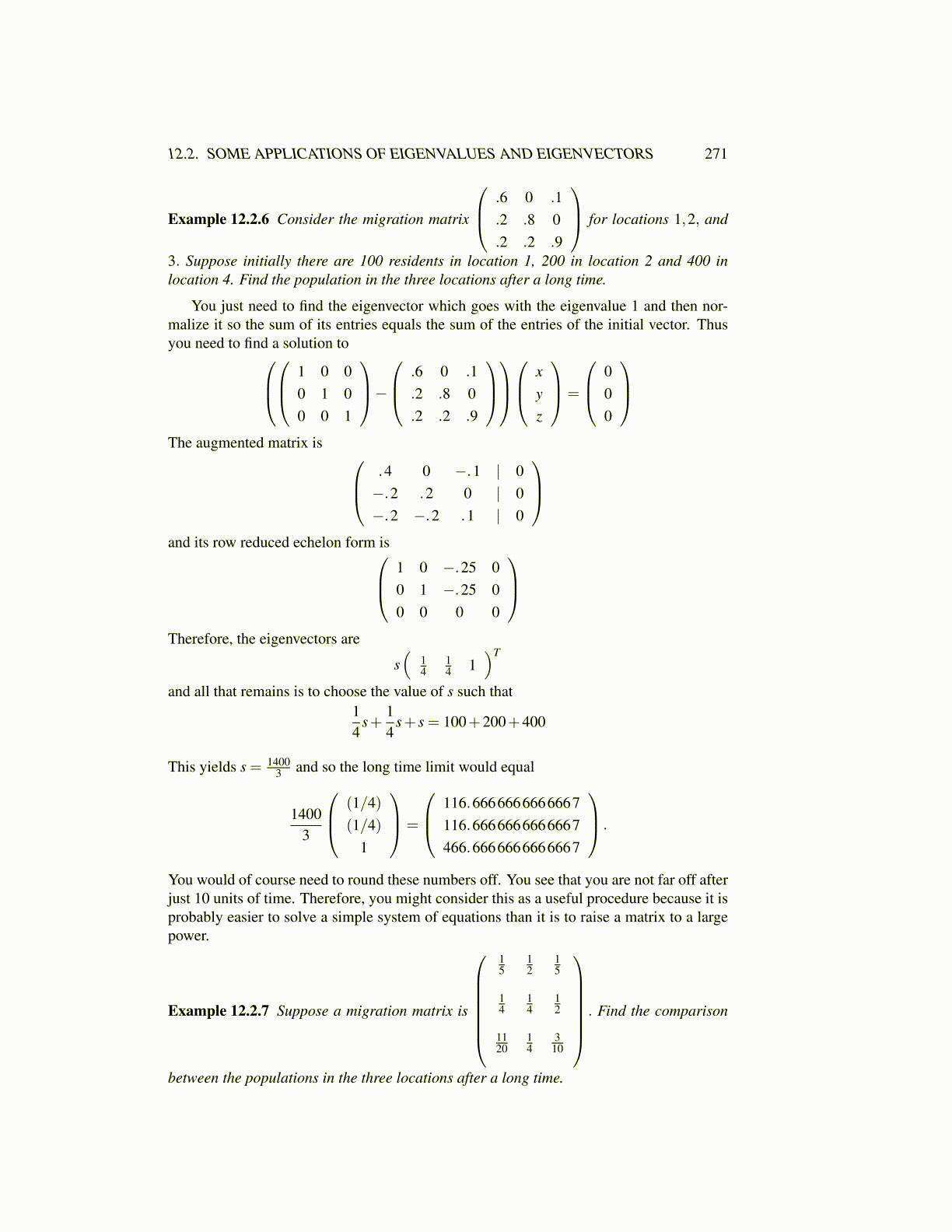
12.2. SOME APPLICATIONS OF EIGENVALUES AND EIGENVECTORS 271
Example 12.2.6 Consider the migration matrix
.6 0 .1.2 .8 0.2 .2 .9
for locations 1,2, and
3. Suppose initially there are 100 residents in location 1, 200 in location 2 and 400 inlocation 4. Find the population in the three locations after a long time.
You just need to find the eigenvector which goes with the eigenvalue 1 and then nor-malize it so the sum of its entries equals the sum of the entries of the initial vector. Thusyou need to find a solution to
1 0 00 1 00 0 1
− .6 0 .1
.2 .8 0
.2 .2 .9
x
yz
=
000
The augmented matrix is .4 0 −.1 | 0
−.2 .2 0 | 0−.2 −.2 .1 | 0
and its row reduced echelon form is 1 0 −.25 0
0 1 −.25 00 0 0 0
Therefore, the eigenvectors are
s(
14
14 1
)T
and all that remains is to choose the value of s such that14
s+14
s+ s = 100+200+400
This yields s = 14003 and so the long time limit would equal
14003
(1/4)(1/4)
1
=
116.6666666666667116.6666666666667466.6666666666667
.
You would of course need to round these numbers off. You see that you are not far off afterjust 10 units of time. Therefore, you might consider this as a useful procedure because it isprobably easier to solve a simple system of equations than it is to raise a matrix to a largepower.
Example 12.2.7 Suppose a migration matrix is
15
12
15
14
14
12
1120
14
310
. Find the comparison
between the populations in the three locations after a long time.